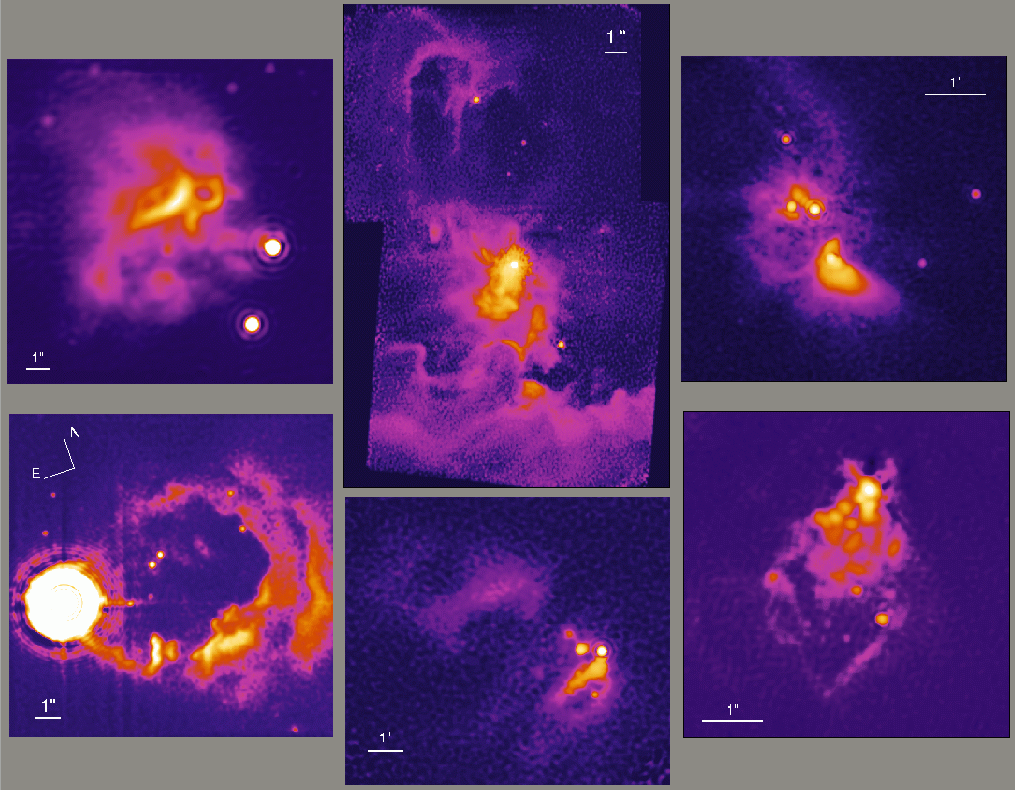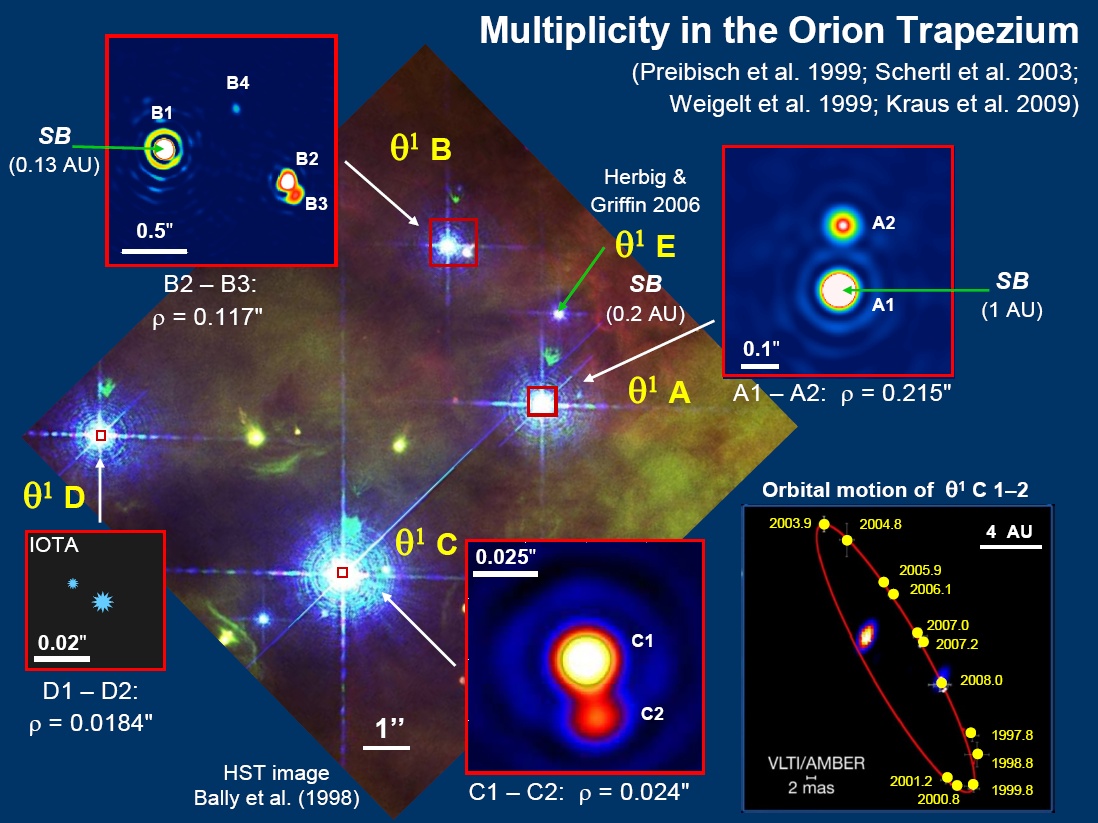The image below shows a mosaic of K-band bispectrum speckle interferometry images of several intermediate- and high-mass young stellar objects. These data were analyzed when I was a member of the Infrared Astronomy Group at the Max-Planck-Institut für Radioastronomie (MPIfR) in Bonn.

Shown here are pseudocolor representations of our reconstructed images. The diffuse nebulosity and the bow-shaped structures are signs of the jets and outflows of these protostars. Also note that, in most cases, the objetcs are clearly resolved into several components, demonstrating the high degree of multiplicity of massive YSOs. The upper row displays IRAS 23151+5912, S140 IRS1, and Mon R2 IRS 3 (from left to right). The lower row shows AFGL 2591, S140 IRS3, and K3-50 A. For details and references see the corresponding papers. In all images north is up, and east is to the left.
The image below summarizes results on the multiplicity of the Orion Trapezium stars revealed by infrared interferometry.

We have obtained K-band speckle reconstructions of 13 bright Orion Nebula cluster member stars of spectral type O or B. We find 8 visual companions of these stars, all of which seem to be low- or intermediate-mass stars (see Preibisch et al. 1999, New Astronomy, 4, 531). Considering both, the visual and the spectroscopic companions of the total sample of 13 target stars, the total number of companions is at least 15. Extrapolation with correction for the unresolved systems suggests that there are at least 1.5 companions per primary star on average. This number is clearly higher than the mean number of 0.5 companions per primary star found for the low-mass stars in the Orion Nebula cluster as well as in the field population. This suggests that a different mechanism is at work in the formation of high-mass multiple systems in the dense Orion Nebula cluster than for low-mass stars.
The first near-infrared bispectrum speckle observations obtained with the BTA 6m telescope revealed a very close (33 milli-arcsecond=mas) visual companion around theta 1 Ori C (Weigelt et al. 1999), contributing about 30% of the total flux at visual to near-infrared wavelengths.
This discovery offered the exciting possibility to determine the orbit of the system. This is very important because the observation of orbital motion allows one to derive direct constraints on the stellar masses as well as the dynamical distance to the Orion Trapezium Cluster. While stellar mass measurements are urgently required for the calibration of stellar evolutionary models of O-type stars, distance estimates are of general importance for all studies on the ONC star-forming region.
Since the discovery in 1997, theta 1 Ori C was repeatedly observed at the Russian BTA 6m telescope and the ESO 3.6m telescope in La Silla with bispectrum speckle interferometry. In 2007 and 2008 we also observed theta 1 Ori C with the method of long-baseline interferometry, using the instrument AMBER at the ESO VLTI.
The full set of data covers the period from 1997 to 2008. It shows that the binary has completed nearly a full orbit cycle during this time (see the plot at the bottom right part of the image above). Our fit to the astrometric orbit of the system (see Kraus et al. 2009 ) yields a period of 11.2 yrs, an eccentricity of about 0.6. We also derived individual stellar masses of 39 and 8 solar masses for the primary and the companion, and an orbital parallax of about 415 pc, which is in excellent agreement with the recent trigonometric parallax of 414 pc derived by Menten et al. 2007 for several young stars in the Orion Nebula Cluster.